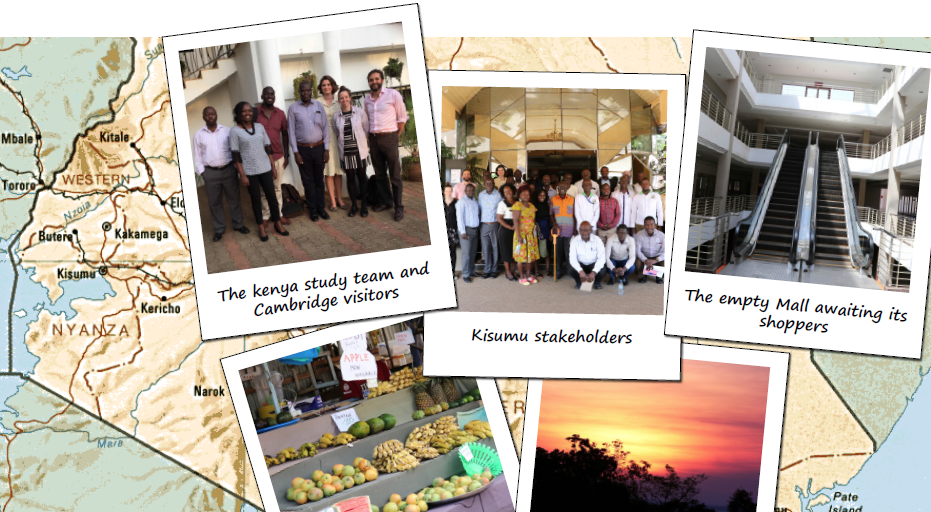How will changes in the food environment affect communities in Kenya?
This article is an extract from epigram, the newsletter of the MRC Epidemiology Unit, which coordinates GDAR. Read the full issue of epigram 2019 here.
Non-communicable diseases such as type 2 diabetes, heart disease and cancers are a global challenge. In fact they are more common in many low and middle income countries than in high income countries. In the lower income nations, most people with these diseases are of working age, which can leave families destitute and harm development.
The MRC Epidemiology Unit is playing its part in addressing this challenge through its coordination of the Global Diet and Activity Research Group and Network (GDAR). This is a partnership between the Unit and researchers in Kenya, Cameroon, South Africa and the Caribbean, funded through the NIHR Global Health Research initiative.
Development is bringing rapid change to people’s diets. Across Africa, supermarkets are proliferating, which means a sudden increase in the variety of foods available – both healthy and unhealthy. In Kisumu in Western Kenya, the planned opening of a hypermarket within a new shopping Mall is providing an opportunity to explore the impacts of such a change.
Researchers are studying the area in Kisumu where the hypermarket is located, as well as a comparison area in the nearby town of Homa Bay. This comparison will help more accurately establish which changes in Kisumu can be attributed to the presence of the hypermarket.
The study involves surveying households, including a questionnaire and body measurements; conducting interviews with government and private sector stakeholders and shoppers; holding focus groups with local residents; and undertaking an audit of food shops and stalls in the area.
In November 2018, researchers from Cambridge visited Kisumu to link up with the Kenyan team who are leading the study. The joint research team engaged in field work to assess the study sites, and met with policymakers and community partners in Kisumu and Homa Bay. These meetings included representatives from across different sectors with an interest in the research: health, education, planning and development, agriculture, fisheries, waste and water, faith groups, and even the boda boda (motorbike taxi) sector.
This engagement is a mark of the potential wide-ranging infrastructural impact of the Mall, and also of the many different uses that the study data could be put to. For instance, the Homa Bay County Health Department is developing population medical cover, for which accurate income, dietary, and physical activity data is of great importance. And the methodology used in the study to code food outlets has been taken up by the County trade directors, who plan to apply it in their own mapping procedures.
As well as laying the groundwork for the future dissemination of the study results, this engagement work has been crucial in gaining local support for data collection. In the spring of 2019 the study team recruited field workers from the community to undertake this work. Nyanza Province, which includes Homa Bay and Kisumu, has high levels of unemployment. The study provided short term employment and, because all field workers received intensive training, improved onward employment prospects.
The training has also provided the community with individuals experienced in conducting research and with enhanced knowledge of health issues – something welcomed by the County authorities who have their own data collection needs.
Recruiting field workers locally has also made data collection much more efficient. Field workers were visiting areas and households they knew and were known in, creating trust and overcoming any resistance to the survey. This enabled the study to survey 400 households, map 2000 food outlets, conduct eight focus groups and 40 stakeholder interviews across the two sites.
The second round of data collection will take place a year after the hypermarket has opened, enabling researchers to see what effect its presence has had on local communities. The study team are hopeful that the groundwork laid so far will mean that when the final results are available, they will be put to work in supporting decisions that will serve the health of Kisumu and Homa Bay – and beyond.

